More about lunar standstills
Bc. Ivo Puffer of the Czech Republic has prompted me to look more carefully at how the Moon’s behaviour changes during its 18.6-year cycle.
The Sun moves 23.4 degrees north of the equator in midsummer, and 23.4 degrees south of it in mid-winter; its path, the ecliptic, is shown as the red line on the graphs below. 23.4 degrees is “the obliquity of the ecliptic”, often written as ε.
The Moon’s path takes it first north of the the ecliptic, then south, by up to 5.1 degrees; this is the “inclination of the Moon’s orbit”, often written i. The Moon’s path crosses the ecliptic at two places, the ascending node, where it crosses the ecliptic from south to north, and the descending node, where it goes the other way. And the nodes move slowly westwards along the ecliptic.
A “major standstill” occurs when the Moon’s ascending node is at 0h Right Ascension – the point where the Sun is at the March equinox. As the graph below shows, at a major standstill the Moon (the blue line) reaches further north, and further south than the Sun, by an additional 5.1 degrees. This occurred, for example, in May 1988.
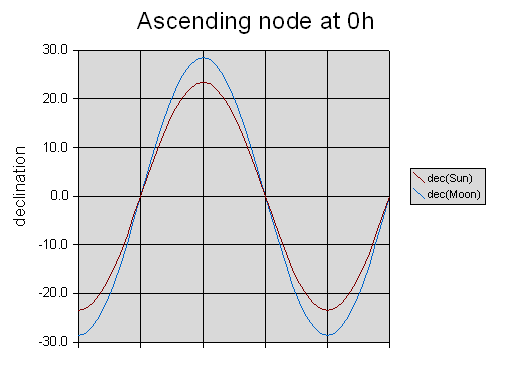
As the Moon’s nodes drift westward along the ecliptic, the crossing-point moves. Here it is about three years later (e.g. 1991), at 20h Right Ascension (roughly where the Sun is in the middle of January). Although the Moon still reaches farther north and south than the Sun, it’s not getting quite so far.
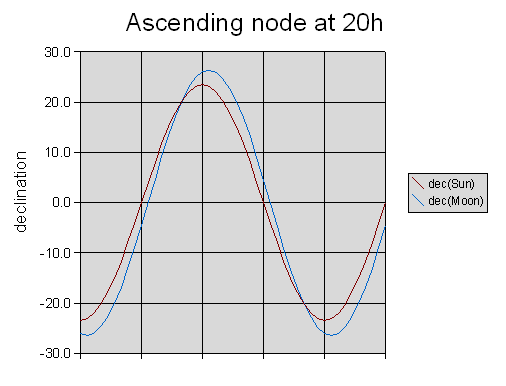
After about four and a half years (for example, in late 1992) the Moon’s ascending node is at 18h Right Ascension: it crosses the ecliptic at the point the Sun reaches at the December solstice. The Moon’s range is now almost the same as the Sun’s, 23.4 degrees north and south. (It’s not quite the same, because the Moon is little above the ecliptic just before its peak. The range is exactly the same a few months later, when the node is at about 17h35m.)
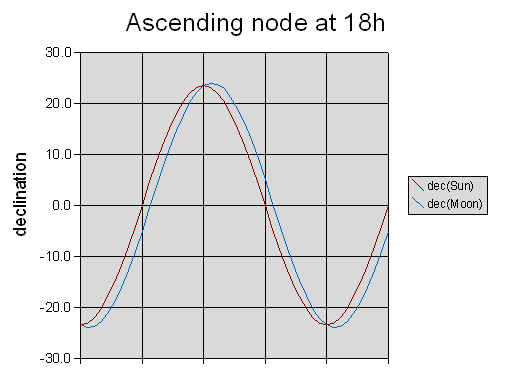
After another four and a half years, we reach a “minor standstill”: the Moon crosses the ecliptic from south to north at Right Ascension 12h – the point where the Sun is at the September equinox. Now the Moon reaches only (23.4 - 5.1) = 18.3 degrees north or south of the equator. This occurred in February 1997.
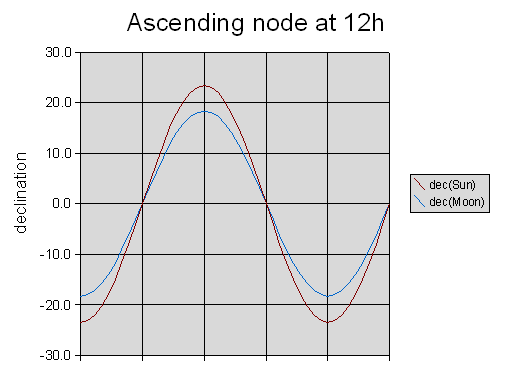
Here’s the position about three years later (e.g. 2000): the node has reached 8h Right Ascension, roughly where the Sun is in late July.
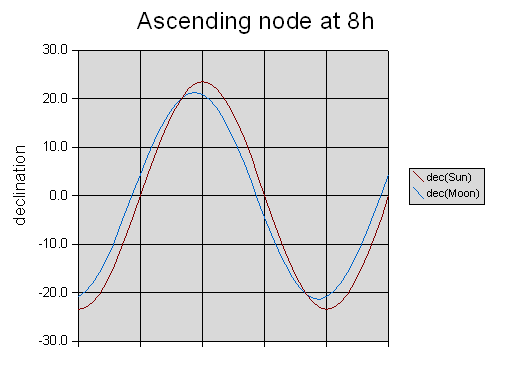
When it gets round to 6h, the position of the Sun at the June solstice (in late 2001, for example), the ranges are almost equal again. (They are exactly equal a few months earlier, when the node is at Right Ascension 6h25m).
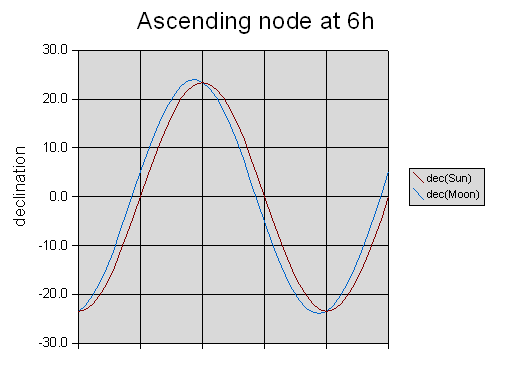
Finally the ascending node gets back to 0h and the cycle is complete, 18.6 years on. And we have another major standstill in June 2006. The next one will be in April 2025.

This discussion ignores many of the complex feature of the Moon's behaviour. Note, for example, that both the obliquity of the ecliptic and the Moon’s inclination change very slowly, so the values given here are only correct for the present time. Two thousand years ago, when many great megalithic monuments were being constructed, the values were somewhat different, so the points on the horizon where the Sun and Moon rose and set were different from today.